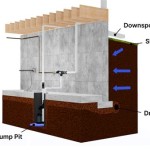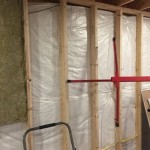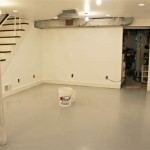How to Effectively Waterproof Your Basement
A waterproof basement significantly enhances the overall well-being and value of a home. By keeping moisture out, you prevent damage, create a healthier living environment, and maximize usable space. If you're aiming to waterproof your basement, there are essential aspects to consider to ensure a successful and long-lasting solution.
1. Assess the Source of Moisture
The first step is identifying the origin of the moisture. Check for cracks in walls or floors, condensation on pipes or appliances, or seepage around windows or doors. This understanding will guide your waterproofing strategy.
2. Exterior Waterproofing
Exterior waterproofing addresses moisture entering from the outside. This involves installing a waterproof membrane over the foundation walls, which prevents water from penetrating through the concrete or masonry. Additionally, ensure proper drainage around the perimeter by installing a French drain or regrading the soil to direct water away from the home.
3. Interior Waterproofing
When exterior waterproofing is not feasible or insufficient, interior waterproofing is necessary. This includes applying a waterproof coating to the interior walls and floor of the basement, creating a barrier that prevents moisture from reaching the living space. Sump pumps can also be installed to remove any water that does penetrate the basement.
4. Vapor Barrier and Ventilation
Moisture can also enter through vapor transmission. Installing a vapor barrier, typically a plastic sheet, on the basement walls and floor prevents moisture from the soil from evaporating into the living space. Additionally, adequate ventilation, such as fans or dehumidifiers, is crucial to control humidity levels and prevent condensation.
5. Sealing Cracks and Penetrations
Cracks and penetrations in the foundation, walls, or floor allow moisture to seep through. Inspect these areas carefully and seal them using hydraulic cement, epoxy, or caulk. This will prevent water from entering through these potential entry points.
6. Proper Drainage
Good drainage is vital for keeping water away from the basement. Downspouts and gutters should be in good condition and direct water away from the home's foundation. Additionally, sloping the ground away from the foundation helps prevent water from pooling against the walls.
7. Maintenance and Inspection
To maintain a waterproof basement, regular maintenance and inspections are essential. Check for any signs of cracks, leaks, or condensation, and address them promptly. Clean gutters and downspouts regularly to prevent clogs, and ensure your sump pump is functioning properly, especially during heavy rainfall.
By following these essential aspects, you can effectively waterproof your basement, create a healthier home environment, and protect your property from costly water damage. Remember that each basement is unique, and consulting with a waterproofing professional can provide customized solutions for your specific needs.

How To Waterproof Your Basement True Value

How To Waterproof A Basement Inside Out Budget Dumpster

Guide To Waterproofing Basement Walls

How To Waterproof Basement Walls With Flex Seal Products Youtube

What Is Exterior Basement Waterproofing And Why Do You Need It Sedona Solutions

How Does Interior Basement Waterproofing Work

How To Waterproof Your Basement Tips For Lasting Results Using Masonry Waterproofer Zar

Best Way To Waterproof Your Basement Dry Pro

Diy Basement Waterproofing Sealonce System Easy Installation Waterproof Com

Average Basement Waterproofing Costs By Square Footage Layout And More Forbes Home
See Also








